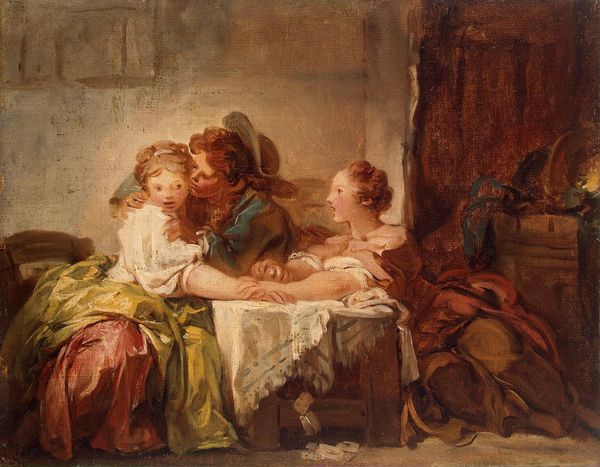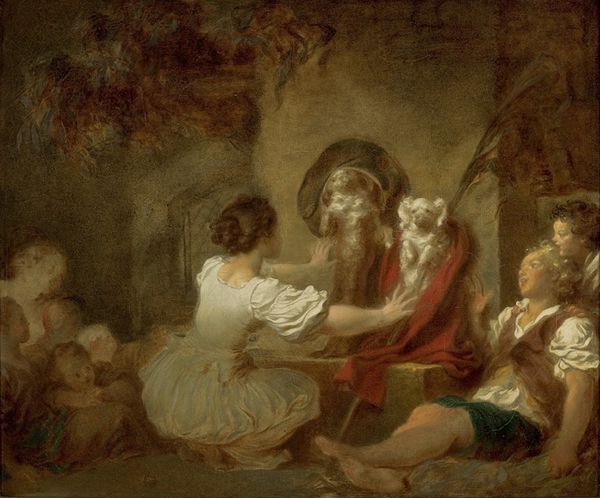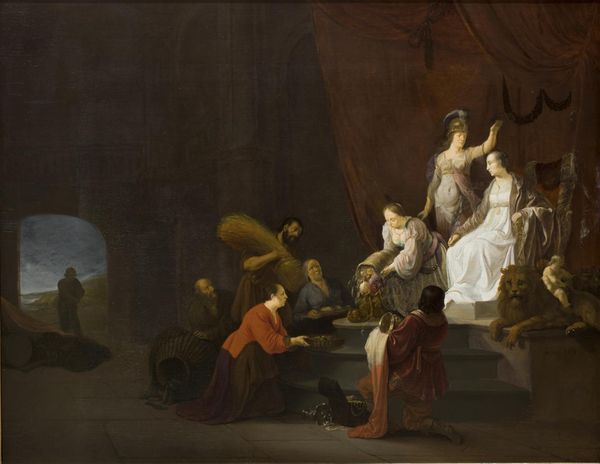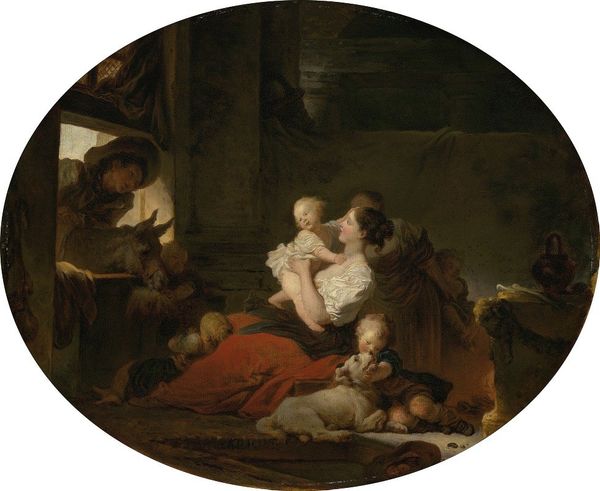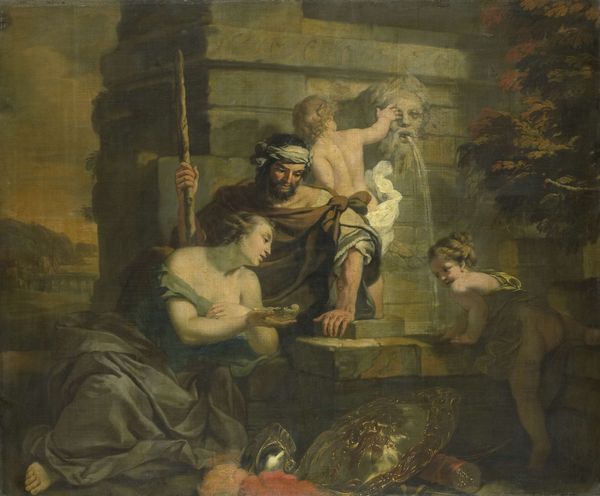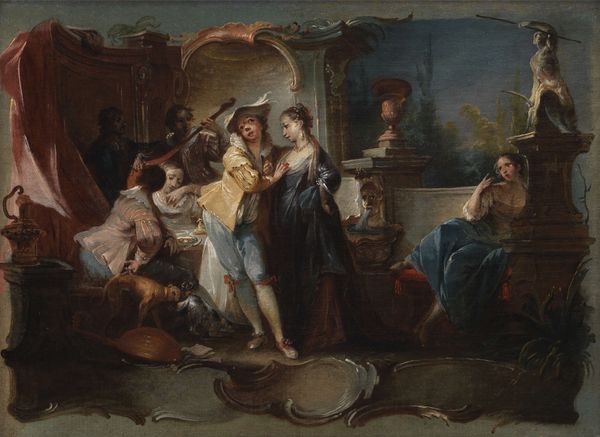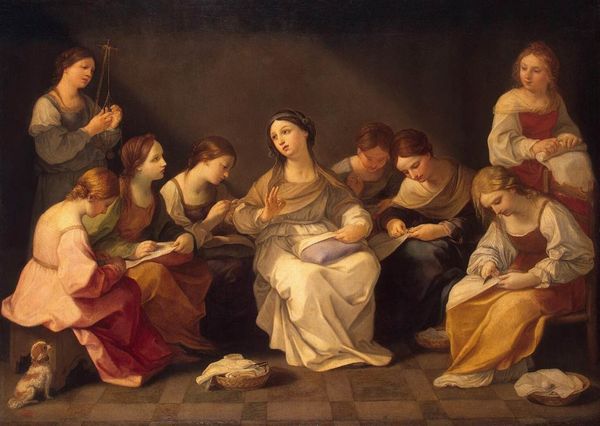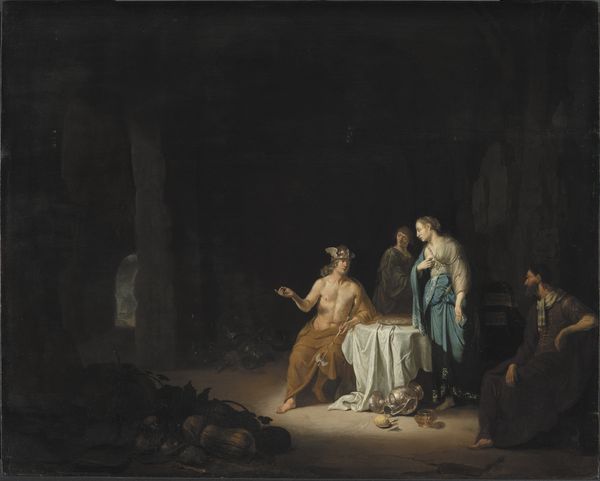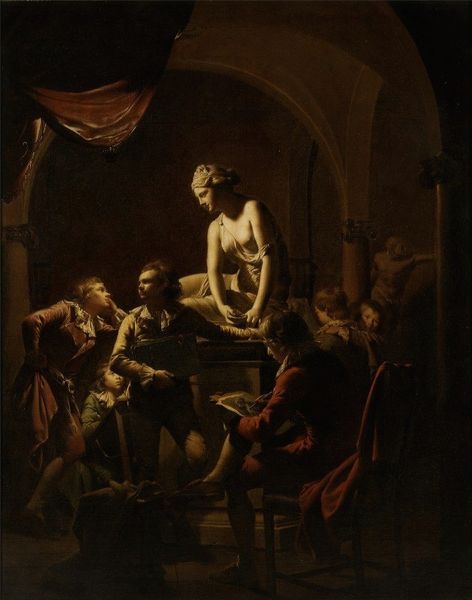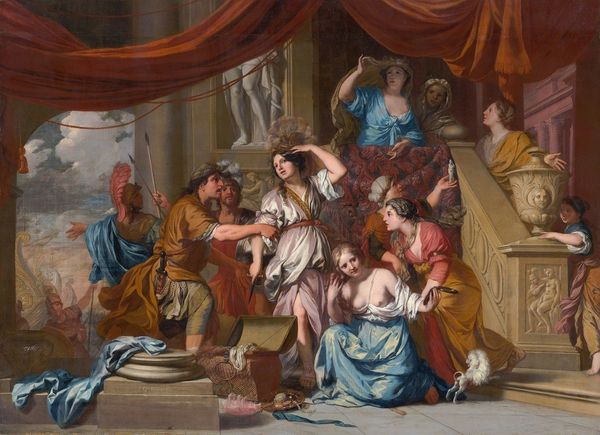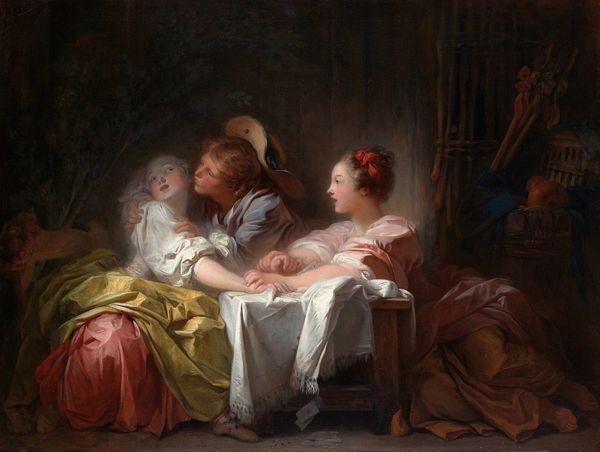
Copyright: Public Domain: Artvee
Editor: We are looking at "Dites donc s’il vous plaît," or "Tell me, please," an oil painting from around 1780 by Jean-Honoré Fragonard. I'm struck by the domestic intimacy of the scene. The children, the mother, and the humble setting create a palpable warmth. What catches your eye? Curator: It’s fascinating to consider the materials Fragonard uses and the social context of their production. Oil paint itself became increasingly available, and the demand for these domestic scenes mirrors the emerging bourgeois class and their consumption habits. The painterly technique also conceals labor – look at how quickly it's painted. Do you see that in the rendering of the clothing? Editor: Yes, it's very loose and expressive. Almost like a sketch in places. So, the material itself – oil paint and its accessibility – fueled this kind of subject matter? Curator: Exactly. Think about the role of the artist as artisan. He's not just divinely inspired; he's also a skilled craftsman working within a specific economic framework. Gouache too was becoming very popular as artists experimented with new materials to engage new consumers and a new market for genre painting. The underpainting in dark colors makes everything come forward in ways previously unseen. What impact do you think this would have on how it was received by the aristocratic patronage? Editor: I imagine some patrons might have considered it a bit… unrefined? Too close to everyday life, not grand enough? But then, it probably spoke to a growing segment of the population. Curator: Precisely. It reveals the shift in power structures reflected in artistic choices and material considerations. Editor: It’s interesting how viewing the materials and the methods in the context of societal and economic forces reveals new depths to what initially seemed like a charming scene. Thanks for pointing this out. Curator: My pleasure. The art isn’t just *what* we see but also *how* and *why* it was made.
Comments
No comments
Be the first to comment and join the conversation on the ultimate creative platform.
